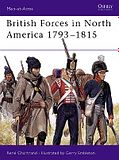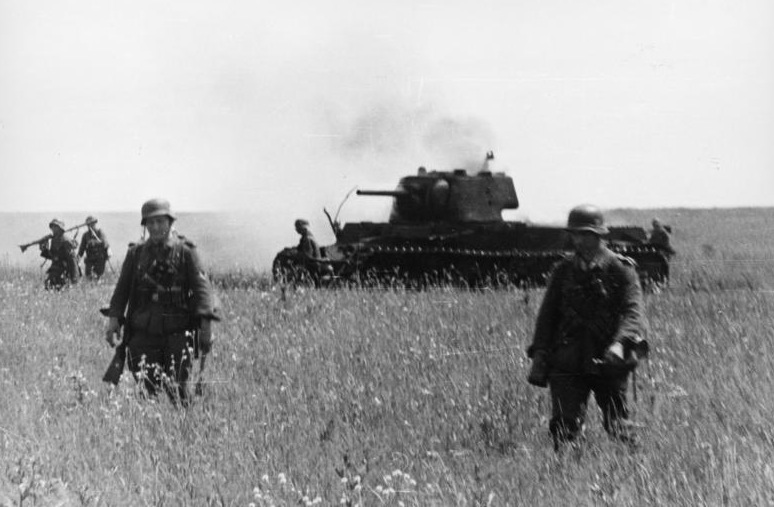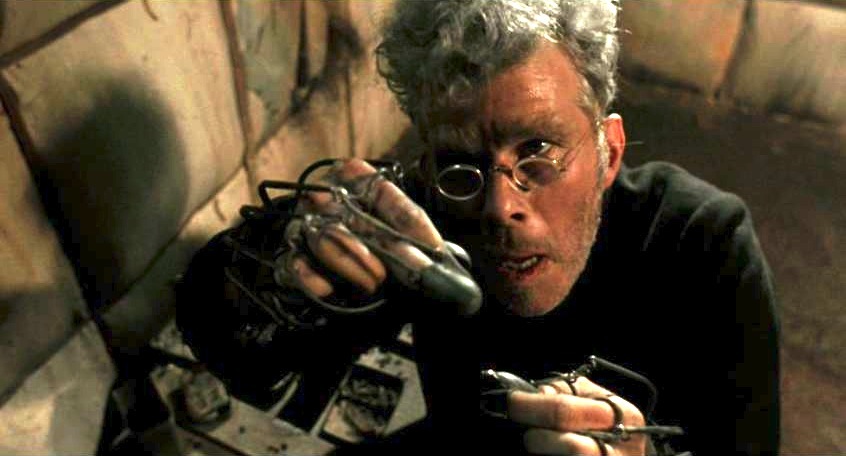The field of Mars
One of the advantages of running a multi-player game is that sometimes you can learn things about the game after the fact. As the Duke famously put it, the account of a battle is like an account of a ball, everyone may know something of it, but no-one knows everything of it.
These are a collection of pictures sent to me by Krisztian, one of the players. They are all from the first battle and include something that I'm afraid that I missed completely.
General Du Gourmand studying the airpower available.
We had set up the table, but hadn't put any of the Soviet troops out yet. The German players knew that the minefields were there and the location of the Soviet main line of resistence, but they had to deploy their troops without knowing exactly what was where.
The village of Cherkasskoye
The Germans also had two preliminary bombardments, which they were able to call in before the first turn of the game. I completely forgot to mention this in my previous post. The Germans used one to hit the Soviet front line and then debated whether they would drop the second on Cherkasskoye, where they believed the Soviets would mass their reserves or in the main line again. I can't remember exactly what they went with in the end.
The central position
The Germans were tasked with driving straight up the middle and breaking through the Soviet position in order to get troops past this defensive line. This was a bit of a change from the usual emphasis on destroying the enemy's army. Still the swath of minefields gave them considerable pause.
German Panthers
These were painted by Krisztian and a very nice job he did too. They represented one of the three classes of German army at the battle.
Another Panther
We used Tigers to represent Tigers (obviously enough), Panthers for Elite Armour (four strength units) and anything in Panzer grey (an mixture of Panzer II, III and IV) for regular Armour.
A Panther preparing to more forward
I had tried to work out special rules for the Soviet defences and ended up tying myself in knots to no good purpose. One of the things that came up again and again from my reading about the German side was the idea of blundering into these concealed defences and not being able to work out what going on before they were plastered with artillery and anti-tank fire.
In the end, I simply ruled that the field blocked line of sight and equiped the Soviets with artillery and mortars that could fire without line of sight. This managed to give the right impression to my mind, without needing to mess with the rules.
German infantry supporting a Tiger
Infantry-Armour co-operation was key, where the Germans were able to practice it on the left and in the centre, they were generally successful. On the right, where they managed to separate them, the Soviets though eventually defeated were able to extract a far higher toll.
Soviet Reserves
The Soviets brought on Katyusha batteries from their reserves and supported them with infantry. Unfortunately, they weren't able to make best use of them, I think because the player got distracted by the savagery of the German attack. As mobile artillery, they could have been a lot more powerful if they could have been kept in the game.
Fighting through the fields
This a picture from the German perspective on the Soviet left. The tanks are moving through the fields supported by the infantry. What the picture doesn't show is the concentration of airpower that was kept going on this flank. The tanks are more powerful in open country, but they need to kick the Soviet defenders out of their prepared defences before they can really start to dominate. As the Soviet infantry ignore retreats in their defences, this was a tough proposition.
Infantry in the centre
The German infantry was a bit more successful at booting the Soviets out, but they weren't as capable of capitalising on the breakthrough and were often slaughtered as soon as they tried to move through the position.
A Panther with a hit marker, just after the breakthrough on the Soviet left.
Here, the German attack was a lot more successful, mainly because Krisztian to co-operate with Von Fatzington to hit my line with Air, Armour and Infantry in successive turns. The airpower hammered my reserves and drove my main line from their defences, the armour then broke through and the infantry consolidated on the position. It was almost impossible to defend against.
Where Tigers come to die
In the centre on the other hand, the story was very different. The Germans had suffered badly from artillery and mines, in part no doubt because they were concentrating so many resource on their right. This was a scenario where the Soviets had the odds stacked against them, but I think we might have done better if we'd counter attacked here rather than trying to shore up the areas where we were losing. In the end, the German left wiped out everything on the Soviet right and was able to support the centre.
General Von Fatzington watches as a Sturmovick begins its attack run
Towards the end of the game, the Germans were far ahead on points, but couldn't claim a victory because they were unable to get their troops off the back of the Soviet line. They shifted armour into the centre in order to make that breakthrough and the Soviets used their last remaining airpower in an attempt to stop them. It was an interesting demonstration as it showed that while the airpower was important, it damaged the German units trying to breakthrough, it wasn't decisive. Without the support of troops on the ground, it wasn't capable of stopping an attack in its tracks.
































































































